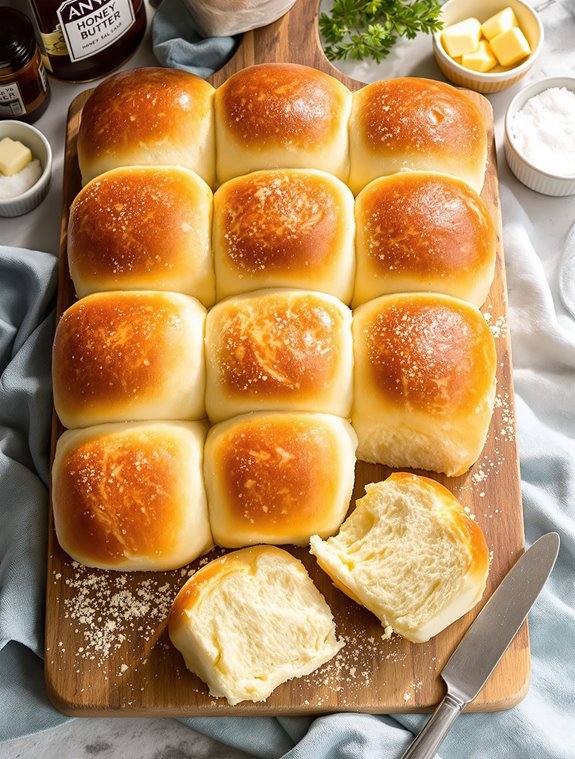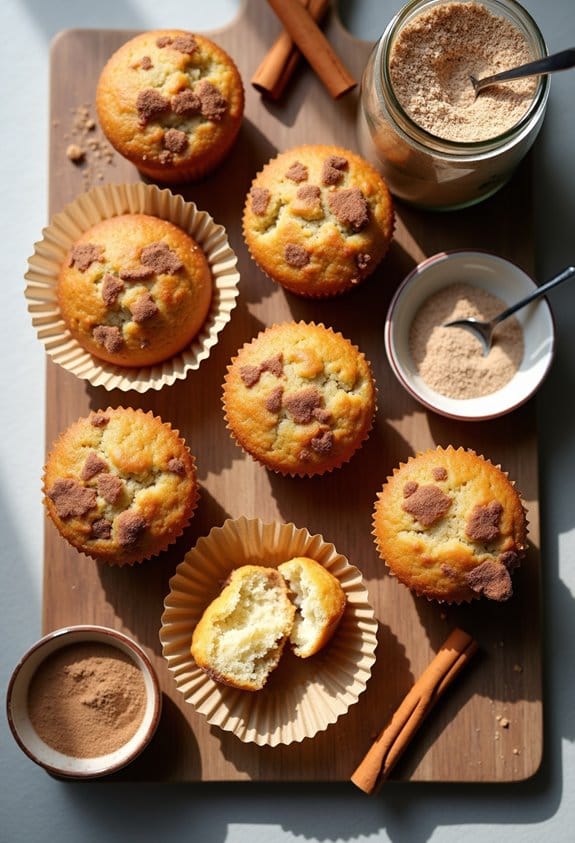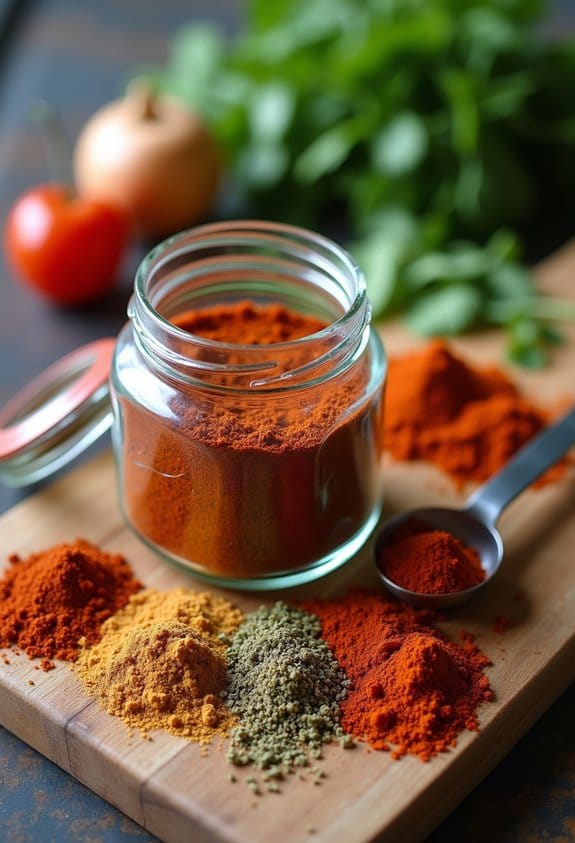Why You’ll Love this Homemade Baking Powder
Making your own baking powder might seem like you’re taking things a bit too far in the DIY department, but trust me, it’s worth it.
I’ve been mixing my own for years, and the difference is noticeable.
First, it’s aluminum-free—no metallic aftertaste in your delicate cakes. Plus, you control the sodium level and starch type. Got corn allergies? Simply swap in arrowroot.
The freshness factor alone changed my baking game. Store-bought versions often sit on shelves for months, losing potency.
My pancakes? Fluffier. My biscuits? Cloud-like. My peace of mind? Priceless.
What Ingredients are in Homemade Baking Powder?
Homemade baking powder is surprisingly simple to make with just a few pantry staples. The magic happens when you combine an acid with a base (plus a little starch to keep things fresh).
What I love about making my own is knowing exactly what’s going into my baked goods—no mystery ingredients or aluminum compounds that can leave that weird metallic taste behind. The science is actually pretty fascinating: when moisture hits this powder, a chemical reaction creates carbon dioxide bubbles that make your baked goods rise beautifully.
- 2 tablespoons cream of tartar (the acid component)
- 1 tablespoon baking soda (the base component)
- 1 tablespoon cornstarch (the moisture absorber)
- Optional substitution: arrowroot or tapioca starch instead of cornstarch for corn-free version
The quality of your ingredients does matter, even in something as simple as baking powder.
Make sure your cream of tartar and baking soda are fresh—old leavening agents lose their potency over time. And about that cornstarch? It’s not just filler. It serves an important purpose by absorbing any ambient moisture that might trigger the reaction prematurely.
For those with corn sensitivities, arrowroot or tapioca work perfectly as substitutes without affecting the performance. The 2:1:1 ratio is key to getting that perfect rise in your baked goods, so measure carefully for best results.
How to Make this Homemade Baking Powder
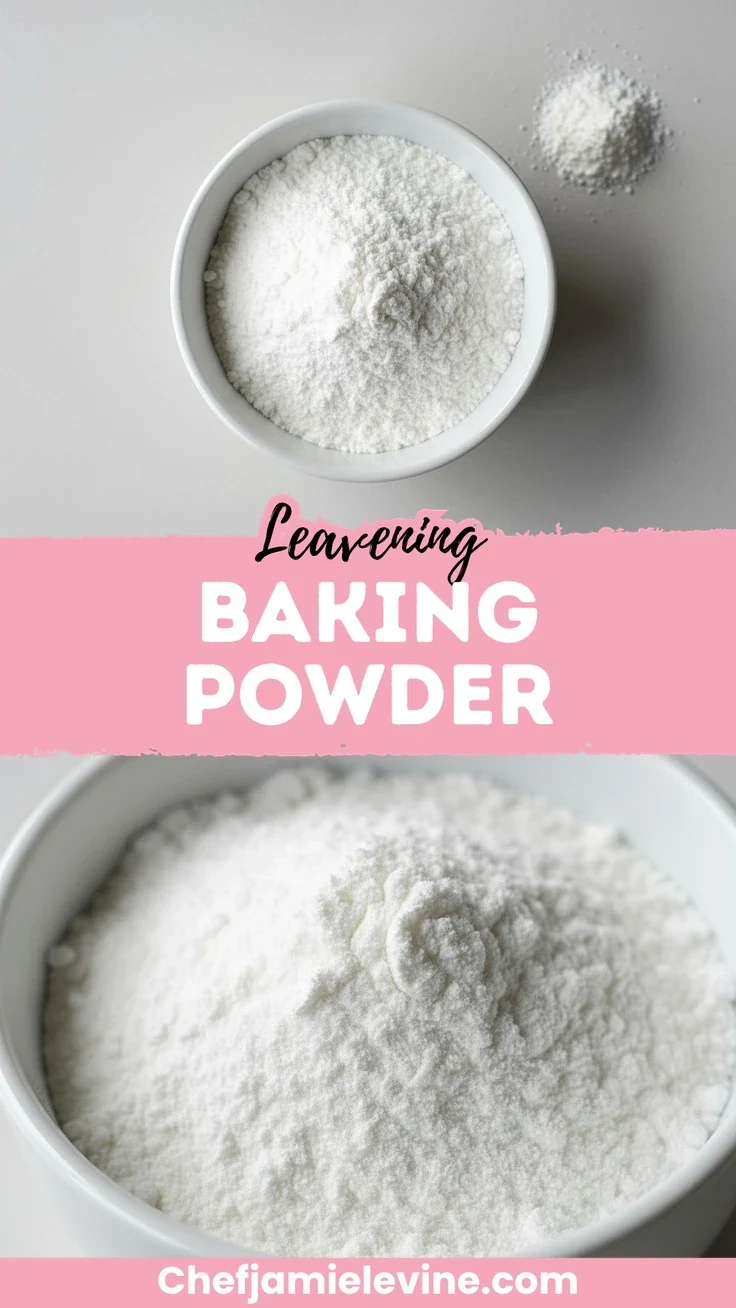
Making your own baking powder couldn’t be simpler—we’re talking about a three-ingredient mix that comes together in minutes. Start by gathering your 2 tablespoons of cream of tartar, 1 tablespoon of baking soda, and 1 tablespoon of cornstarch (or arrowroot/tapioca if you’re avoiding corn).
The key to success is thorough mixing, so grab a small whisk and combine everything until completely uniform with no streaky patches. Those little lumps that sometimes form in baking soda can ruin the consistency, so I like to use a small sieve to break them up before mixing—this little step makes a world of difference.
Once everything’s perfectly blended, transfer your homemade baking powder to a dry, airtight container right away. Moisture is the enemy here, capable of activating the powder before you’re ready to use it.
Store your jar in a cool cupboard away from the stove where steam might reach it. Remember, this is single-acting baking powder (unlike most commercial versions that are double-acting), which means it starts working as soon as it gets wet and doesn’t get a second rise when heated. What does that mean for you? Simply get those batters into the oven promptly after mixing for the best rise.
Not sure if your powder is still good? Just do a quick freshness test by stirring ½ teaspoon into ¼ cup of hot water—if it fizzes vigorously, you’re golden; if not, it’s time for a fresh batch.
Homemade Baking Powder Substitutions and Variations
Three clever substitutions exist when you find yourself with no baking powder and a recipe that desperately needs it. My favorite emergency swap combines ½ teaspoon cream of tartar with ¼ teaspoon baking soda for each teaspoon of baking powder needed. Works like magic in a pinch.
For acidic batters containing buttermilk, lemon juice, or cocoa, you can actually reduce the cream of tartar slightly. The natural acids help with the lift.
If you’re avoiding corn, simply substitute the cornstarch with arrowroot or tapioca starch. I’ve tried both, and they work perfectly for keeping your homemade mix free-flowing.
What to Serve with Homemade Baking Powder
Now that you’re equipped with your perfect homemade leavening agent, let’s talk about the delicious foods you can create with it.
I use mine in fluffy pancakes and waffles that rise beautifully without that metallic aftertaste. Biscuits become cloud-like pillows, and my Sunday morning scones? Divine with this stuff.
Try it in quick breads like banana or zucchini, where the clean flavor lets your ingredients shine. My family raves about my cornbread, which tastes so much better since I ditched store-bought powder.
And don’t forget classic cakes, muffins, and cookies—they all benefit from this fresher, aluminum-free version.
Final Thoughts
While I’ve shared all the technical details about making your own baking powder, I truly believe the best reason to do it’s the satisfaction that comes from such a simple DIY project.
There’s something empowering about creating a kitchen staple from scratch, knowing exactly what’s in it.
No aluminum, no mystery ingredients, just three simple components working together.
I keep mine in a little glass jar labeled with the date, ready whenever inspiration strikes for pancakes or muffins.
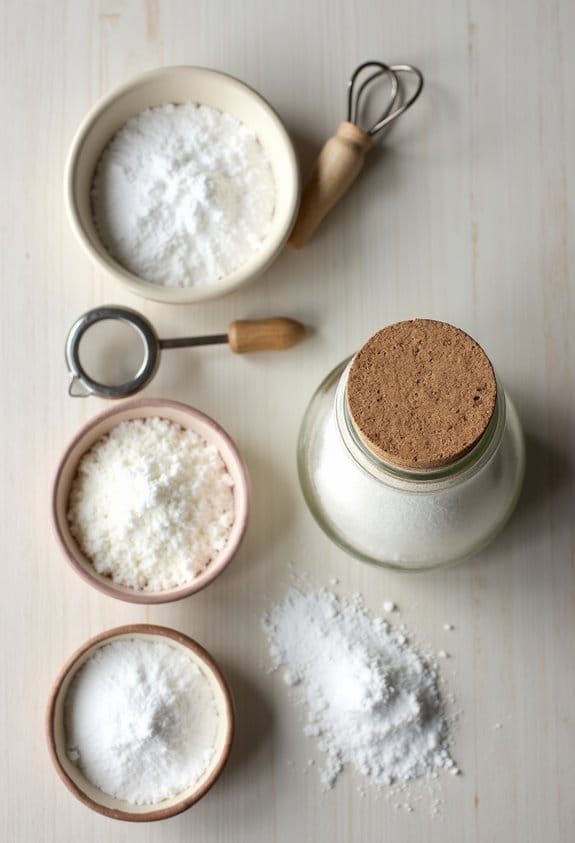
Homemade Baking Powder
Ingredients
Equipment
Method
- Gather your ingredients: cream of tartar, baking soda, and cornstarch (or arrowroot/tapioca if avoiding corn).
- Use a small sieve to break up any lumps in the baking soda before mixing.
- Combine all ingredients in a bowl and whisk thoroughly until completely uniform with no streaky patches.
- Transfer immediately to a dry, airtight container to prevent moisture from activating the powder prematurely.
- Store in a cool cupboard away from the stove or any sources of steam.
- To test freshness, stir ½ teaspoon into ¼ cup of hot water – vigorous fizzing indicates it’s still good.

